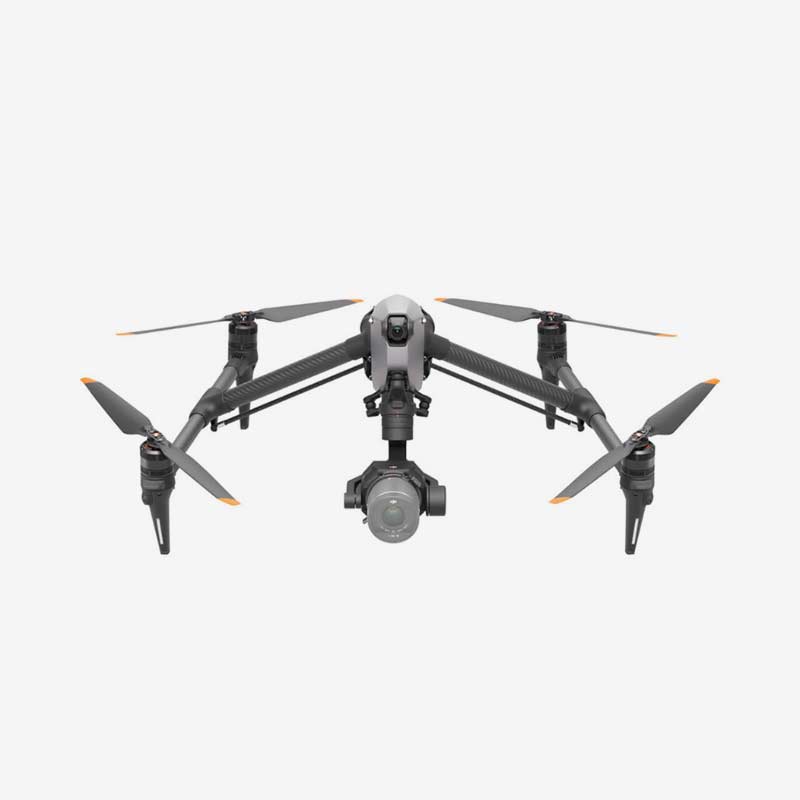
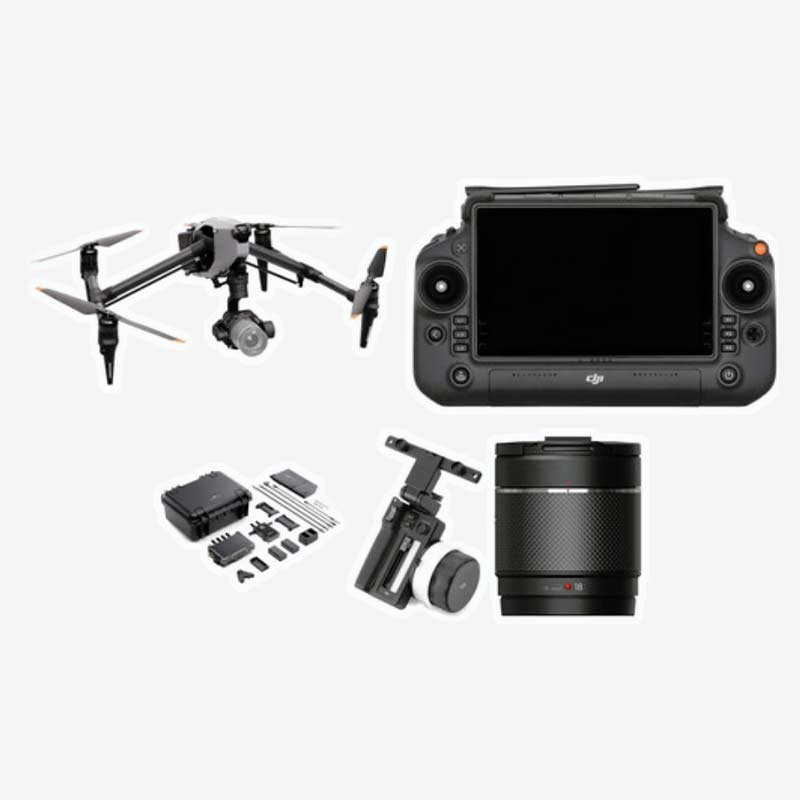
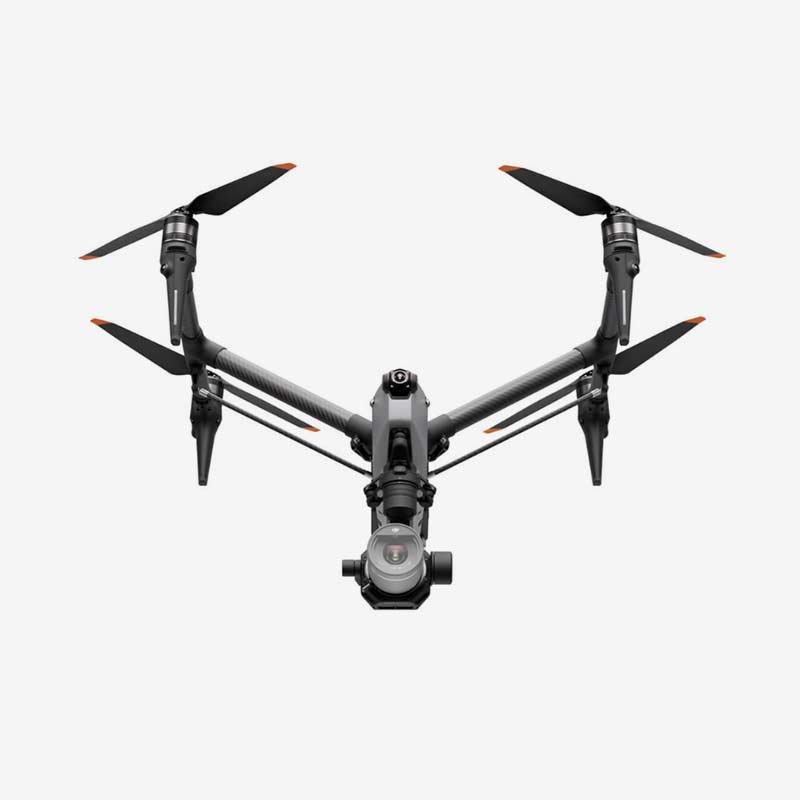
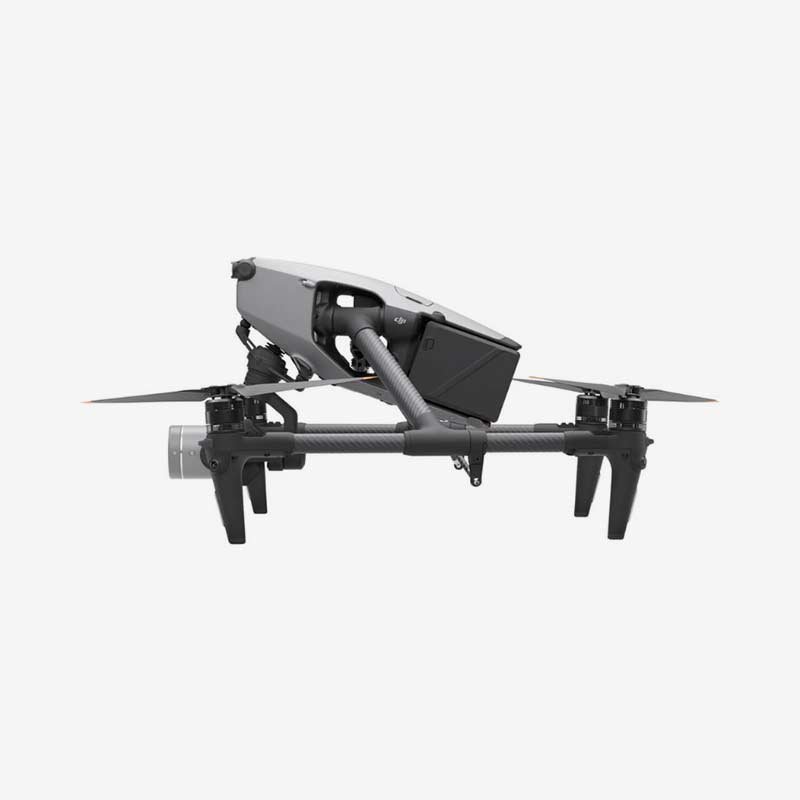


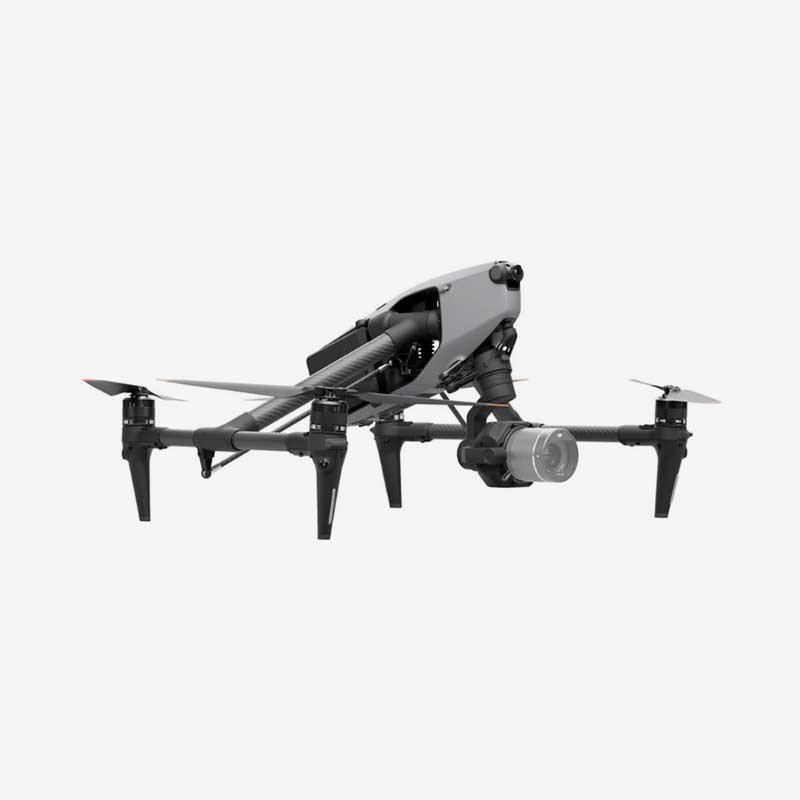
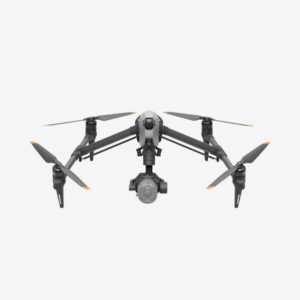
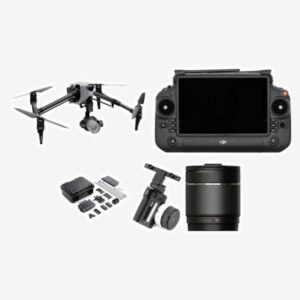
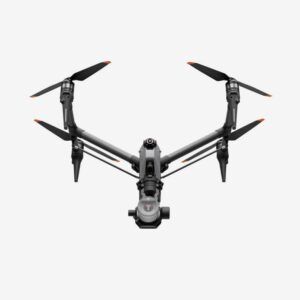

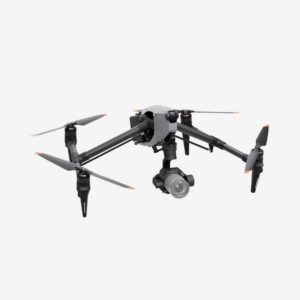
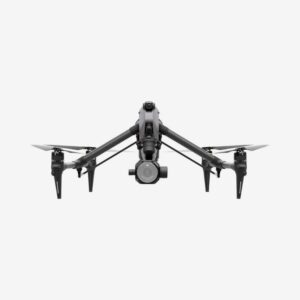
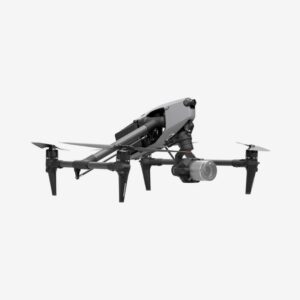
DJI Inspire 3 Combo with 4 Lenses Included
₹2,299,999.00 Original price was: ₹2,299,999.00.₹2,263,999.00Current price is: ₹2,263,999.00. incl. Gst
- Model: T740
- Aircraft Weight: Approx. 3,995 g (with batteries, gimbal, lens, PROSSD, and propellers)
- Max Takeoff Weight: Approx. 4,310 g
- Max Flight Time: Approx. 28 minutes (landing gear down), 26 minutes (landing gear up)
- Max Hover Time: Approx. 25 minutes
- Hovering Accuracy (RTK): ±0.1 m vertical, ±0.1 m horizontal
- RTK Positioning Accuracy: 1 cm + 1 PPM (horizontal), 1.5 cm + 1 PPM (vertical)
- Max Horizontal Speed: 94 km/h
- Max Ascent Speed: 8 m/s
- Max Descent Speed: 8 m/s vertical, 10 m/s tilt
- Max Wind Resistance: 14 m/s (during flight), 12 m/s (takeoff and landing)
- Max Operating Altitude: 3800 m with standard props, 7000 m with high-altitude props
- Camera Sensor: 35mm full-frame CMOS
- Camera Max Resolution: Photo: 8192×5456, Video: 8192×4320
- Video Formats: MOV, CinemaDNG
- Battery Model: TB51 Intelligent Battery, 4280 mAh, 98.8 Wh
- Battery Charging Time: Fast Mode approx. 35 minutes to 90%
- Obstacle Avoidance: Six-direction sensing (forward, backward, left, right, up, down), includes ToF
- Remote Controller: RM700B
- Transmission System: O3 Pro, up to 15 km (FCC) with FPV camera, 13 km at 1080p, 5 km at 4K
- App & FPV Camera: DJI Pilot 2 app, FPV camera with 1920×1080@60fps resolution and 161° FOV
Lenses included :
- DL 18 mm F2.8 ASPH Lens
- DL 24mm F2.8 LS ASPH Lens
- DL 35mm F2.8 LS ASPH Lens
- DL 50mm F2.8 LS ASPH Lens
Need Help? Chat with an Expert
- 9891098328
Free Shipping & Returns
Assured Quality
Online Support 24/7
Secure Payment
- Description
- Specification
- In The Box
- FAQ's
- Reviews (0)
Description
DJI Inspire 3 Combo with 4 Lenses Included
DJI Inspire 3 Combo with 4 Lenses is a fully loaded professional drone package designed to give cinematographers, filmmakers, and creative professionals unmatched control, quality, and flexibility for aerial cinematography. From high-end cinema production to premium commercials, this combo offers the Inspire 3 drone paired with the Zenmuse X9-8K Air camera and four versatile DL lenses. Whether you are aiming for breathtaking landscapes, cinematic city shots, or dynamic action sequences, this kit gives you everything you need to achieve your creative vision with maximum precision and professional-grade results.
Features Of the DJI Inspire 3 Combo with 4 Lenses
1. Zenmuse X9-8K Air Camera – Capture Cinema-Quality Images Like Never Before
The Inspire 3 is equipped with the cutting-edge Zenmuse X9-8K Air gimbal camera, capable of recording in up to 8K resolution with formats like CinemaDNG and Apple ProRes RAW. This system ensures every detail is captured with immense sharpness, dynamic range, and flexibility, making it perfect for cinema production. From sunrises to low-light scenes, you will get visually stunning footage with accurate colors and impressive clarity. With this camera, you can shoot content that is ready to enter professional post-production workflows without worrying about quality limitations.
2. Includes 4 Premium DL-Mount Lenses – Flexibility to Frame Every Scene Perfectly
This combo includes four carefully selected DL-mount lenses: 18mm, 24mm, 35mm, and 50mm, giving you the power to adapt your framing based on every shot’s requirements. Whether you need ultra-wide establishing shots, natural mid-range views, or medium telephoto perspectives for storytelling, these lenses allow you to instantly switch and adjust according to the scene’s mood. The wide range of lens options lets you craft visuals exactly the way you imagined, while maintaining cinematic sharpness and minimal distortion.
3. 161° Ultra-Wide Night Vision FPV Camera – See More, Fly Safer, Even in the Dark
The Inspire 3 is fitted with a dedicated 161-degree ultra-wide FPV camera with powerful night vision capabilities, ensuring that the pilot always has a clear view of the environment even when lighting conditions are challenging. This system works independently of the main camera and offers real-time video feedback to maintain full situational awareness. Whether you’re flying through forests, narrow streets, or nighttime settings, this FPV camera allows you to navigate safely while your director focuses on capturing cinematic footage.
4. Dual Control System – Director and Pilot Working in Harmony
Inspire 3 supports a dual-control system that allows the pilot and cinematographer to control the drone and camera separately but simultaneously. This setup ensures that while the pilot focuses solely on precise flight movements, the cinematographer can fully concentrate on framing and capturing the perfect shot. This professional approach removes creative limitations and makes it easier to perform complex maneuvers without sacrificing shot quality, enabling full creative freedom on demanding sets.
4. RTK + Waypoint Pro – Flawless Flight Accuracy for Repeated and Complex Shots
The Inspire 3 integrates RTK (Real-Time Kinematic) technology combined with DJI’s advanced Waypoint Pro system, allowing users to pre-plan extremely precise flight routes. Whether you’re shooting VFX-heavy scenes, multi-take shots, or coordinated sequences, you can repeat complex movements exactly as planned without worrying about position drift. The system ensures centimeter-level accuracy, giving you the confidence to execute highly technical and repeatable camera movements required for top-tier productions.
5. Professional Color Science & Dynamic Range – Deliver True Cinematic Color
The Inspire 3 offers up to 14+ stops of dynamic range along with DJI’s improved color science to deliver stunning cinematic tones. The footage captured is full of natural contrast, detailed highlights, smooth gradients, and realistic shadows, giving editors and colorists maximum room to work with during post-production. This makes sure your final content, whether destined for the big screen, OTT platforms, or commercial work, meets industry-grade cinematic standards.
6. DJI O3 Pro Video Transmission – Reliable and Long-Range Monitoring Without Compromise
With the integrated DJI O3 Pro transmission system, you get ultra-stable, low-latency HD video feeds up to 15 km range, giving both the pilot and cinematographer the ability to monitor and operate without interruptions. This robust system minimizes interference and ensures you get real-time visuals even in demanding environments. Whether you are operating in cities, mountains, or remote locations, you will always have a crystal-clear view of your shot.
7. Compact, Foldable, and Ready for Location Shoots – Built for Mobility and Speed
Despite being a full-fledged cinema drone, Inspire 3 maintains a compact and foldable design to help crews move fast between different sets. The drone’s structure is engineered for quick assembly and disassembly, saving valuable production time. The included hard-shell case and thoughtful accessory arrangement make the entire combo highly portable, helping you transport the drone and all lenses easily without worrying about damage or bulk.
How to Use the DJI Inspire 3 Combo with 4 Lenses
Charge All Batteries and Accessories Like a Responsible Pilot
Before you even think of flying, make sure every battery—drone, remote, and lens accessories—is fully charged. An Inspire 3 without juice is like a rickshaw without a puller, won’t go far and will cry halfway.Mount the Correct Lens Gently, Not Like Fixing a Jammed Door
Select the right lens based on your project. Attach it smoothly to the gimbal, align the markings, and lock it properly. Don’t apply gorilla strength; lenses are delicate and expensive, not steel utensils.Power Up and Let Inspire 3 Do Its Warm-Up Dance
Turn on the drone, remote, and wait patiently as the Inspire 3 syncs up, checks satellites, and does its little boot-up dance. Avoid rushing; it’s like waking up—give it a moment to get ready.Test Fly Slowly Before Becoming the Cinematographer of the Year
Take off gently, hover, and test controls before planning blockbuster shots. Get comfortable with each lens’s field of view, because every lens has its own drama and mood, just like actors.Land Properly and Store Everything Like a Gentle Artist
Land smoothly using Inspire 3’s precision landing or manual control. Pack the drone, lenses, and accessories neatly back into their case. Inspire 3 likes neatness more than you like paneer butter masala.
How to Clean the DJI Inspire 3 Combo with 4 Lenses
Clean the Drone Body with Love and a Soft Cloth
Use a microfiber cloth to wipe off dust and fingerprints from the drone’s body. Avoid harsh chemicals unless you want Inspire 3 to throw tantrums. Treat it like you’re wiping your favorite sunglasses.Clean Each Lens Like You’re Polishing a Diamond
First, blow off loose dust using an air blower, then wipe with a lens-cleaning cloth gently. A dirty lens will turn your cinematic footage into a horror movie, so keep them crystal clear.Propellers Also Deserve Your Attention, Don’t Ignore Them
Wipe the propellers lightly to remove dirt or bugs. Never bend or scrub too hard, or they’ll refuse to perform. Clean blades = smooth flights without the sound of angry vibrations.Gimbal and Sensor Cleaning Should Be Gentle Like Handling a Newborn
Use a soft brush or blower to clean gimbal motors and sensors. Avoid pressing hard. Inspire 3’s sensors are like introverts—keep them clean and undisturbed, and they’ll work silently for you.Clean Battery Terminals and Contact Points with Care
Use a dry cloth or cotton swab to gently clean battery ports and contact points. No moisture, no pressure—just a gentle wipe to keep the current flowing like a Bollywood love story.
How to Take Care of the DJI Inspire 3 Combo with 4 Lenses
Always Store Everything in Its Protective Case, No Shortcuts
Pack the drone, lenses, and accessories properly into their foam-padded case. Avoid lazy storage like tossing it on the car’s backseat. Inspire 3 and its lenses need royal treatment, not jugaad arrangements.Handle the Lenses Like You’re Holding Eggs
Don’t drop, bump, or let them roll around. Use both hands when attaching or removing lenses. These aren’t plastic toys—they are precision-crafted tools, and each scratch will cost you more than your weekend biryani budget.Keep the Firmware Updated Like It’s a VIP Pass
Always update the drone, camera system, and remote firmware regularly. Skipping updates is like skipping breakfast—you’ll regret it halfway through the day when things stop working properly.Batteries Need Love Too, Treat Them Right
Store batteries at around 50%-65% charge if not flying for weeks. Avoid fully charging or fully draining them for long periods. Inspire 3’s batteries are like pets—they behave well if you take care of them.Avoid Flying During Bad Weather, Not Everything is a Challenge
Heavy winds, rains, or foggy mornings might look tempting for dramatic shots but are risky for your Inspire 3. Wait for clear skies; even Bollywood shoots need weather clearance!
Do’s & Don’ts for DJI Inspire 3 Combo with 4 Lenses
Do Charge Everything Fully, Don’t Take Risks with Half Batteries
Fully charged batteries = full confidence. Flying on half-battery because “chal jayega” will make you land with regrets, and sometimes with rescue operations.Do Match Lenses Correctly, Don’t Force Fit Like a Wrong Charger
Use only compatible lenses and attach them properly. Forcing a lens is not bravery—it’s a ticket to costly repairs. Read the manual, not just wing it.Do Pre-Flight Checks, Don’t Skip Just Because You’re Late
Check propellers, lenses, gimbal, GPS, and battery status. Don’t assume “ab toh seekh gaya hoon.” Inspire 3 always deserves attention, even if you’re an experienced pilot.Do Use ND Filters When Needed, Don’t Ignore Light Conditions
ND filters help control exposure in bright sunlight. Not using them will turn your footage into a washed-out mess, which even Instagram filters won’t save.Do Respect Drone Laws, Don’t Act Like The Sky Belongs To You
Follow all flying regulations. Airports, restricted zones, and no-fly areas are not optional. The Inspire 3 is cinematic, not rebellious.
Safety Tips for DJI Inspire 3 Combo with 4 Lenses
Maintain a Safe Distance From Humans, Animals, and Aunties
The propellers spin fast enough to make chutney, so keep Inspire 3 far from people and pets. This is a professional machine, not a toy to show off at weddings.Avoid Flying Near Airports or Government Installations
No, you won’t become James Bond. Always check for restricted zones before flying. Flying near airports can cause real trouble, and you don’t want that kind of attention.Check Weather Updates Before Every Flight
The Inspire 3 might be powerful, but it’s not a storm-chaser. Heavy winds and rain will ground you faster than a strict teacher. Sunny, calm weather is your best friend.Always Keep an Eye on Battery Percentage While Flying
Never push Inspire 3 till the last drop of power. Low battery at high altitude is not thrilling—it’s terrifying. Land early and change batteries like a wise professional.Practice Emergency Return-to-Home and Landing Before Paid Projects
Before handling client shoots, practice RTH (Return to Home) and emergency landings. Inspire 3 can handle surprises, but only if you know how to use its safety features.
Why Choose the DJI Inspire 3 Combo with 4 Lenses?
This isn’t just a drone; it’s a complete aerial cinematography ecosystem crafted for creators who aim for nothing less than excellence. Whether you are working on a blockbuster film, a high-end advertisement, or an artistic documentary, the Inspire 3 Combo delivers unbeatable quality, flexibility, and control. From 8K cinema-quality footage to advanced navigation and lens options, every element of this combo is designed to meet the toughest demands of professional productions.
Make Every Frame Cinematic — Order the Inspire 3 Combo Today!
Don’t settle for ordinary shots when you have the opportunity to achieve extraordinary ones. Bring your creative vision to life with the Inspire 3 Combo with 4 Lenses and unlock the full potential of professional aerial filmmaking. Secure yours now and elevate your storytelling to legendary heights.
Aircraft
| Parameter | Specification |
|---|---|
| Model | T740 |
| Aircraft Weight | Approx. 3,995 g (with gimbal camera, 2 batteries, lens, PROSSD, and propellers) |
| Max Takeoff Weight | Approx. 4,310 g |
| Hovering Accuracy Range | Vertical: ±0.1 m (vision), ±0.5 m (GNSS), ±0.1 m (RTK) Horizontal: ±0.3 m (vision), ±0.5 m (GNSS), ±0.1 m (RTK) |
| RTK Positioning Accuracy (RTK Fix) | 1 cm + 1 PPM (horizontal), 1.5 cm + 1 PPM (vertical) |
| Max Angular Velocity | Pitch: 200°/s Roll: 200°/s Yaw: 150°/s |
| Max Pitch Angle | N Mode: 35° S Mode: 40° A Mode: 35° T Mode: 20° Emergency Brake: 55° |
| Max Ascent Speed | 8 m/s |
| Max Descent Speed | Vertical: 8 m/s Tilt: 10 m/s |
| Max Horizontal Speed | 94 kph |
| Max Service Ceiling Above Sea Level | Standard Propellers: 3800 m High-Altitude Propellers: 7000 m |
| Max Wind Resistance | Takeoff/Land: 12 m/s In-Flight: 14 m/s |
| Max Hovering Time | Approx. 25 minutes |
| Max Flight Time | Landing Gear Lowered: 28 minutes Landing Gear Raised: 26 minutes |
| Motor Model | DJI 3511s |
| Global Navigation Satellite System | GPS + Galileo + BeiDou |
| Propeller Model | Standard: DJI 1671 High-Altitude: DJI 1676 |
| Operating Temperature Range | -20° to 40° C (-4° to 104° F) |
| Diagonal Distance | Landing Gear Raised: 695 mm Landing Gear Lowered: 685 mm |
| Travel Mode Dimensions (L×W×H) | 500.5 × 709.8 × 176 mm |
| Drone Class (EU) | C3 |
Gimbal
| Specification | Details |
|---|---|
| Sensor | 35mm full-frame CMOS |
| Max Resolution | Photo: 8192×5456 Video: 8192×4320 |
| Video Resolution | View detailed list |
| Supported Lenses | DL 18 mm F2.8 ASPH Lens DL 24 mm F2.8 LS ASPH Lens DL 35 mm F2.8 LS ASPH Lens DL 50 mm F2.8 LS ASPH Lens DL 75 mm F1.8 Lens |
| Photo Format | JPG, DNG |
| Video Format | MOV, CinemaDNG |
| Operation Mode | Capture, Record, Playback |
| Exposure Mode | P, A, S, M |
| Shutter Type | Electronic shutter |
| Shutter Speed | 8-1/8000 s |
| White Balance | AWB MWB (2000K-10000K) |
| ISO Range (Photo) | ISO: 100-25600 |
| ISO Range (Video) | EI: 200-6400 |
| Anti-flicker | Capture Mode: Auto, 50 Hz, 60 Hz, OFF |
| Angular Vibration Range | Hovering: ±0.002° Flying: ±0.004° |
| Installation Method | Quick release |
| Mechanical Range | Tilt: -128° to +110° (landing gear lowered) -148° to +90° (landing gear raised) Roll: -90° to +230° Pan: ±330° |
| Controllable Range | Tilt (landing gear lowered): Before gimbal tilt limit extension: -90° to +30° After gimbal tilt limit extension: -115° to +100° Tilt (landing gear raised): Before gimbal tilt limit extension: -90° to +30° After gimbal tilt limit extension: -140° to +75° Roll: ±20° Pan: ±300° |
| Max Control Speed (With DJI RC Plus) | Tilt: 120°/s Roll: 180°/s Pan: 270°/s |
| Max Control Speed (With DJI Master Wheels) | Tilt: 432°/s Roll: 432°/s Pan: 432°/s |
| Weight | Approx. 516 g (without lens) |
Video Transmission
| Specification | Details |
|---|---|
| Video Transmission System | O3 Pro |
| Live View Quality | FPV Camera: Up to 1080p/60fps Gimbal Camera: Up to 1080p/60fps, 4K/30fps |
| Max Live Video Bitrate | 50 Mbps |
| Max Transmission Distance | Single Control Mode: • FPV Camera: ~15 km (FCC), 8 km (CE/SRRC/MIC) • Gimbal (1080p/60fps): ~13 km (FCC), 7 km (CE/SRRC/MIC) • Gimbal (4K/30fps): ~5 km (FCC), 3 km (CE/SRRC/MIC) Dual-Control Mode: • FPV Camera: ~12 km (FCC), 6.4 km (CE/SRRC/MIC) • Gimbal (1080p/60fps): ~11.2 km (FCC), 5.6 km (CE/SRRC/MIC) • Gimbal (4K/30fps): ~4 km (FCC), 2.4 km (CE/SRRC/MIC) |
| Lowest Latency | FPV Camera: 90 ms Gimbal Camera: 90 ms |
| Operating Frequency | 2.4000–2.4835 GHz 5.150–5.250 GHz (CE: 5.170–5.250 GHz) 5.725–5.850 GHz 5.1 & 5.8 GHz may be restricted based on local laws |
| Transmitter Power (EIRP) | 2.4 GHz: <33 dBm (FCC), <20 dBm (CE/SRRC/MIC) 5.1 GHz: <23 dBm (CE) 5.8 GHz: <33 dBm (FCC), <30 dBm (SRRC), <14 dBm (CE) |
Battery
| Specification | Details |
|---|---|
| Model | TB51 Intelligent Battery |
| Capacity | 4280 mAh |
| Nominal Voltage | 23.1 V |
| Type | Li-ion |
| Chemical System | LiCoO2 |
| Energy | 98.8 Wh |
| Weight | Approx. 470 g |
| Operating Temperature | -20° to 40° C (-4° to 104° F) |
| Charging Temperature | -20° to 40° C (-4° to 104° F) |
| Low Temp Charging Note | Battery auto-heats below 10° C (50° F); Charging below 0° C (32° F) may reduce lifespan |
| Max Charging Power | 205.5 W |
| Charge via Aircraft | Not supported |
Battery Charging Hub
| Specification | Details |
|---|---|
| Input | 100-240 V AC, max 8 A |
| Output | 26.4 V, 7.8 A |
| Total Rated Output | 476 W (includes 65 W USB-C PD fast charging) |
| Charging Time | Fast Mode: Approx. 35 mins to 90% Standard Mode: Approx. 55 mins to 100% Silent Mode: Approx. 80 mins to 100% |
| Charging Environment | Tested at 25°C (77°F) in well-ventilated conditions; Fast Mode charges each battery pair to 90% sequentially, then all to 100% |
| Charging Temperature | -20° to 40° C (-4° to 104° F) |
| Weight | Approx. 1,680 g |
Memory Card
| Specification | Details |
|---|---|
| Memory Card Type | DJI PROSSD 1TB |
Sensing
| Direction | Measurement Range | Effective Sensing Speed | Field of View (FOV) |
|---|---|---|---|
| Forward | 1.5–48 m | ≤15 m/s | H: 90°, V: 103° (gear raised) H: 72°, V: 103° (gear lowered) |
| Backward | 1.5–48 m | ≤15 m/s | H: 90°, V: 103° |
| Lateral | 1.5–42 m | ≤15 m/s | H: 90°, V: 85° |
| Upward | 0.2–13 m | ≤6 m/s | Front/Back: 100°, Left/Right: 90° |
| Downward | 0.3–18 m | ≤6 m/s | Front/Back: 130°, Left/Right: 160° |
| Operating Environment (F/B/L/R/U) | Surfaces with discernible patterns and adequate lighting (lux >15) |
| Operating Environment (Downward) | Surfaces with discernible patterns, diffuse reflectivity >20% (e.g., walls, trees, people); adequate lighting (lux >15) |
| Obstacle Sensing Limitations | Disabled while landing gear is in motion |
| ToF Infrared Sensor Measurement Range | 0–10 m |
Remote Controller
| Feature | Details |
|---|---|
| Model | RM700B |
| Operating Time | Approx. 3.3 hours (Built-in batteries) Approx. 6 hours (Built-in + External battery) |
| Operating Frequency | 2.4000-2.4835 GHz 5.725-5.850 GHz Note: 5.1GHz/5.8GHz use subject to local regulations |
| Video Output Port | HDMI |
| Power Supply | Built-in batteries or external battery |
| Coordinated Operation | Supports dual controls and multi-operator coordination |
| Power Consumption | 12.5 W |
| Operating Temperature | -20° to 50°C (-4° to 122°F) |
| Storage Temperature | -30° to 45°C (-22° to 113°F) within 1 month -30° to 35°C (-22° to 95°F) for 1–3 months -30° to 30°C (-22° to 86°F) for 3–12 months |
| Battery Type | Built-in: 3250mAh, 7.2V (1 set) External: WB37 Intelligent Battery |
| Wi-Fi Protocol | Wi-Fi 6 |
| Wi-Fi Frequencies | 2.4000-2.4835 GHz 5.150-5.250 GHz 5.725-5.850 GHz |
| Wi-Fi Transmit Power (EIRP) | 2.4 GHz: <26 dBm (FCC), <20 dBm (CE/SRRC/MIC) 5.1 GHz: <26 dBm (FCC), <23 dBm (CE/SRRC/MIC) 5.8 GHz: <26 dBm (FCC/SRRC), <14 dBm (CE) |
| Bluetooth Protocol | Bluetooth 5.1 |
| Bluetooth Frequency | 2.4000-2.4835 GHz |
| Bluetooth Transmit Power | <10 dBm |
App
App Specifications
| Category | Specification |
|---|---|
| App | DJI Pilot 2 |
FPV Camera
| FPV Camera |
| FOV | 161° |
| Resolution | 1920 × 1080 @ 60fps |
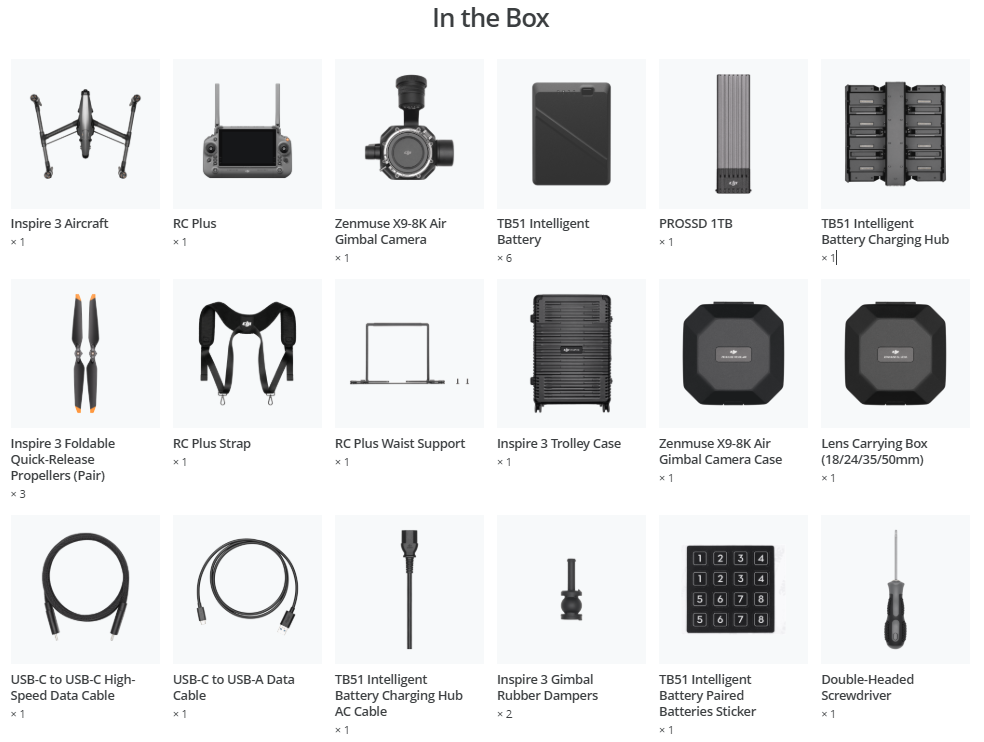
Can I use the DJI Inspire 3 with the X9 gimbal camera, TB50 battery, and storage card of the DJI Ronin 4D interchangeably?
No, the gimbal camera and TB50 battery are not interchangeable between the DJI Inspire 3 and the DJI Ronin 4D. However, the storage card is interchangeable.
To improve DJI Inspire 3’s battery life, flight experience, and performance and stability at all attitudes and speeds, Inspire 3’s X9-8K Air gimbal camera has been optimized specially for aerial photography. Compared with the X9-6K and X9-8K gimbal cameras of Ronin 4D, the X9-8K Air’s weight is reduced by approximately 50% with a centralized center of gravity, ensuring an improved flight time and flight experience. Additionally, the gimbal axis arms and lens locking design adopt optimized vibration-proof designs for aerial photography so that the aircraft can stay stable even during dramatic or high-speed flight maneuvers.
The new TB51 battery features higher energy density with reduced weight and size, which is beneficial for the total flight time and wind resistance when flying forward, and is more advantageous than TB50 in terms of discharge voltage and reliability.
The DJI PROSSD 1TB of DJI Ronin 4D is interchangeable with Inspire 3.
Both the X9-6K and X9-8K gimbal cameras of DJI Ronin 4D weigh approximately 1.04 kg, while the X9-8K Air of DJI Inspire 3 weighs approximately 516 g, for a weight reduction of approximately 50%.
Are the gimbal camera, remote controller, storage card, and battery of DJI Inspire 3 interchangeable with those of DJI Inspire 2?
No.
All modules of DJI Inspire 3 have been redesigned to deliver fully upgraded performance in terms of flight, imaging, video transmission, storage, and battery life.
Gimbal Camera:
DJI Inspire 3 comes with the X9-8K Air gimbal camera with a newly designed gimbal camera quick-release port that meets the data transmission requirements of 8K CinemaDNG videos, and further ensures stable gimbal connection during flight.Remote Controller:
DJI Inspire 3 comes with the professional-level DJI RC Plus and professional accessories such as a strap and waist support.
The DJI RC Plus supports O3 Pro, a cinema-grade video transmission system that has taken a generational leap in transmission distance, latency, and overall stability.
The 7-inch high-bright screen delivers up to 1,200 nits of brightness to provide an extraordinary outdoor monitoring experience.
It also features several buttons and dials on the front, back, and top, which enable fast and intuitive operation. Button functions can also be customized.
The built-in battery of RC Plus provides an operating time of approximately 3.3 hours, and extends to 6 hours with an external WB37 battery.
It also supports battery hot-swapping to improve creative efficiency.
On top of the classic flight control interface, the new DJI Pilot 2 app for Inspire adds a cinema-grade monitoring interface, which allows simple and convenient checking of information like camera exposure, video specifications, focal length, and gimbal angle, easily meeting the monitoring requirements of gimbal operators and DPs.Storage:
The included DJI PROSSD 1TB supports a max read speed of 900MBps for recording high-frame-rate videos of 8K CinemaDNG, and the footage can be read on a computer directly through the provided USB-C to USB-C cable without the need for a card reader — convenient for DITs.Battery:
DJI Inspire 3 is equipped with six TB51 intelligent batteries and an all-new battery charging hub.
TB51 batteries utilize the latest battery chemistry technology for optimized reliability and performance, and are smaller, lighter, more streamlined, and higher voltage compared to TB50.
They provide a 28-minute max flight time and support hot swapping.
The all-new foldable battery charging hub can accommodate eight batteries.In Fast mode, it can charge two batteries to 90% in just 35 minutes.
It can charge eight batteries to 100% in only 160 minutes.
The included 65W USB-C port can also be used to charge an RC Plus.
Test Conditions:
Measured using the included USB-C to USB-C data cable with an Apple MacBook Pro 2021 (Apple M1 Max chip).
Measured when flying forward at a constant speed of 36 kph with the landing gear down in a windless environment at sea level, with gimbal camera and lens attached to the aircraft and without other accessories, and recording 4K/24fps H.264 (S35) video until the battery reached 0%.
This data is for reference only. Please refer to the actual values in the app.
Tested when charging two batteries to 90% and 100% with the battery charging hub at a room temperature of 25° C (77° F) in a well-ventilated environment.
This data is for reference only.
What major upgrades does the DJI Inspire 3 have compared to the Inspire 2?
DJI Inspire 3 introduces a completely redesigned integrated body, a more agile and high-mobility flight system, and a powerful full-frame 8K imaging system. It also features the advanced O3 Pro transmission system and efficient workflows tailored for full-scenario filmmaking. Compared to the Inspire 2, image quality and operational efficiency are significantly improved, offering filmmakers more creative freedom and a superior aerial cinematography experience.
What is the maximum horizontal speed of DJI Inspire 3?
The DJI Inspire 3 can reach a maximum horizontal speed of 94 km/h in windless conditions, with the gimbal camera and lens attached.
What is the maximum takeoff weight of DJI Inspire 3?
The maximum takeoff weight of the Inspire 3 is approximately 4310 g.
What is the maximum wind resistance of the Inspire 3?
The aircraft can resist wind speeds of up to 12 m/s during takeoff or landing, and up to 14 m/s during flight, when tested under windless sea-level conditions.
What is the maximum flight time of DJI Inspire 3?
Hovering Time: Up to 25 minutes
Forward Flying Time: Up to 28 minutes at a constant speed of 36 km/h
These values were measured under controlled conditions and may vary in real-world use.
Does the DJI Inspire 3 support obstacle sensing?
Yes, the Inspire 3 is equipped with an omnidirectional visual sensing system that enables obstacle detection in all directions, ensuring comprehensive flight safety.
Note: Obstacle avoidance is disabled during the gear transition. When the landing gear is down, front-left and front-right areas (approx. 20° each) become blind spots.
How can I achieve the widest tilt and pan angles with the Inspire 3’s gimbal camera?
With the landing gear raised, the camera can pan a full 360° without obstruction.
With the landing gear lowered and the camera facing forward, it can tilt up to 80° unobstructed.
What are the dimensions of DJI Inspire 3?
- When the landing gear is raised, the diagonal distance is approx. 695 mm;
- When the landing gear is lowered, the diagonal distance is approx. 685 mm;
- Travel Mode Dimensions 500.5×709.8×176 mm (length×width×height).
Can I control the tilt of the FPV camera on the Inspire 3?
Yes. Using the default remote controller settings, the tilt axis of the FPV camera can be controlled by rotating the top-left wheel on the remote.
What lenses are compatible with the Zenmuse X9-8K Air?
The Zenmuse X9-8K Air is compatible with the following DJI DL lenses:
DL 18 mm F2.8 ASPH Lens
DL 24 mm F2.8 LS ASPH Lens
DL 35 mm F2.8 LS ASPH Lens
DL 50 mm F2.8 LS ASPH Lens
DL 75 mm F1.8 Lens*
*Note: When using the 75 mm lens, both the tilt axis counterweight and yaw axis counterweight must be installed on the gimbal to ensure stable operation.
How is the image sensor on the Zenmuse X9-8K Air an upgrade over the Zenmuse X7?
The Zenmuse X9-8K Air features a full-frame image sensor capable of recording up to 8K RAW video. It supports dual native ISO and delivers 14+ stops of dynamic range, offering greater detail retention and more flexibility across various cinematographic scenarios—an upgrade from the Super 35 sensor found on the Zenmuse X7.
What is the difference in lens mounting between the Zenmuse X9-8K Air and Zenmuse X7?
The Zenmuse X9-8K Air introduces a lens locking lever. After mounting the lens, this lever must be tightened to secure the lens and reduce camera shake. Before removing the lens, ensure the locking lever is in the unlocked position.
Can the Zenmuse X9-8K Air be used independently of the DJI Inspire 3?
No. The Zenmuse X9-8K Air is specifically designed to work with the DJI Inspire 3 and cannot be used separately. If similar image quality is required on a ground-based platform, the DJI Ronin 4D is the recommended alternative.
Are CinemaDNG and Apple ProRes RAW codecs included with the DJI Inspire 3?
No. The licenses for CinemaDNG and Apple ProRes RAW are sold separately. To enable recording in either format, a separate license purchase is required.
Can I use Zenmuse X7 DL/DL-S lens ND filters with the DL 75 mm F1.8 or DL 18 mm F2.8 lenses?
No. The Zenmuse X7 DL/DL-S lenses use 46 mm filters, while the DL 75 mm F1.8 and DL 18 mm F2.8 lenses use 55 mm filters. Instead, you can use the following third-party 55 mm ND filters:
B+W ND64 Filter (φ55mm)
Nisi Ex-Color ND64 Filter (φ55mm)
Kase ND8 Filter (φ55mm)
What should I be careful about when using the DL 75 mm F1.8 lens?
The DL 75 mm F1.8 is a medium telephoto lens, and due to its longer focal length, it is more prone to image shake during high-mobility movements such as takeoffs, landings, or sudden stops. To avoid unstable footage, it is advised to minimize filming during such maneuvers.
What are the highlight features of DJI Inspire 3’s video transmission system?
DJI Inspire 3 features the new O3 Pro video transmission system, supporting simultaneous transmission from both the gimbal camera and FPV camera. Key highlights include:
HD 1080p/60fps live feeds with latency as low as 90 ms
Support for 4K/30fps UHD live feeds for professional monitoring and livestreaming needs
Dual transmission capability, allowing high-quality monitoring from both cameras
Latency data was measured under optimal conditions with strong transmission signals and while recording 4K/60fps ProRes RAW.
How do I enable 4K/30fps live feeds on DJI Inspire 3?
To enable 4K/30fps live feeds:
Ensure the camera is recording video at 30 fps or below.
Open the DJI Pilot 2 app, tap the “…” icon in the top menu bar, and navigate to Image Transmission Settings.
Enable the 4K/30fps live feed option.
Note:
If the video transmission bitrate is below 10 Mbps, switch manually to 1080p resolution, as auto adjustment is not supported.
In poor communication conditions, the system will automatically reduce frame rate for a smoother live feed, prioritizing the FPV camera’s stability.
Enabling 4K/30fps live feeds may reduce transmission range.
Does DJI Inspire 3 support using dual remote controllers simultaneously?
Yes. Inspire 3 supports dual-control mode, allowing two remote controllers to receive live feeds and control the drone independently. This enables the pilot and gimbal operator to work from different locations on set.
What are the max video transmission distances of the FPV and gimbal cameras?
Single Control Mode:
FPV Camera: Approx. 15 km (FCC), 8 km (CE/SRRC/MIC)
Gimbal Camera (1080p/60fps live feeds): Approx. 13 km (FCC), 7 km (CE/SRRC/MIC)
Gimbal Camera (4K/30fps live feeds): Approx. 5 km (FCC), 3 km (CE/SRRC/MIC)
Dual-Control Mode:
FPV Camera: Approx. 12 km (FCC), 6.4 km (CE/SRRC/MIC)
Gimbal Camera (1080p/60fps live feeds): Approx. 11.2 km (FCC), 5.6 km (CE/SRRC/MIC)
Gimbal Camera (4K/30fps live feeds): Approx. 4 km (FCC), 2.4 km (CE/SRRC/MIC)
Note: These distances are measured in an unobstructed outdoor environment free from interference, with the gimbal camera and lens attached to the aircraft and without other accessories. The figures represent the farthest one-way, non-return flight distances under each standard. During actual flight, always pay attention to in-app reminders.
Does DJI Inspire 3 support the DJI High-Bright Remote Monitor?
Yes, the DJI High-Bright Remote Monitor can pair directly with the Inspire 3 to receive live feeds. When Ronin 4D Hand Grips are attached, the remote monitor can also control the gimbal and focus. Additionally, the HDMI and SDI ports on the monitor allow live feed output to other monitoring devices.
What is the operating time of a fully charged DJI RC Plus? How long does it take to fully charge?
When using only the built-in battery, DJI RC Plus can operate for up to approx. 3.3 hours.
When using the built-in battery along with an external battery, the maximum operating time extends to approx. 6 hours.
Charging Times:
Built-in battery only: Approx. 2 hours
With external battery (both batteries at 0%): Approx. 2 hours
With external battery at 0% and built-in battery at 100%: Approx. 70 minutes
Recommendation: For optimal charging performance, use the included battery charging hub along with the USB-C to USB-C high-speed data cable. Please note that charging time may vary depending on the ambient temperature.
Why am I unable to charge two batteries simultaneously with the battery charging hub?
The charging hub prioritizes batteries with lower remaining power. When two batteries have different power levels, the hub charges the one with less power first. Once both batteries reach the same power level, simultaneous charging begins.
Why are batteries paired?
Paired batteries will charge and discharge together to maximize flight time and battery life and to optimize the flight experience. Unpaired batteries can still be used, but this may affect the flight time and battery life.
How do I know if the batteries are correctly mounted?
When the battery is inserted in place, the battery release will make a clicking sound. If the battery is not mounted correctly, the DJI Pilot 2 app will prompt “Battery not properly installed.”
Can I take off if the two batteries have different power levels?
Yes, under specific conditions:
If the battery temperature is above 5°C (41°F), the aircraft can take off as long as the power difference is less than 21% and the voltage difference is under 0.7 V.
If the temperature is below 5°C (41°F), the power difference must be less than 8% and voltage difference under 0.1 V.
If these conditions are not met, the aircraft will not take off, and the DJI Pilot 2 app will display a warning about excessive power discrepancy.
How should I store the batteries for long-term periods, and what is the maximum storage time?
Store batteries individually in a dry environment at approximately 25°C (77°F). Do not store them inside the aircraft or charging hub. For long-term storage:
Fully charge and discharge the batteries every three months.
Allow the battery to auto-discharge to 60% to maintain health.
Set the self-discharge interval to 1 day if storing a fully charged battery to enable faster reduction to 60%.
How do I update the firmware of the batteries?
There are two ways to update battery firmware:
Via Aircraft: Ensure the aircraft is on the latest firmware. Insert the batteries, power on the aircraft and RC. If a battery update is needed, a prompt will appear in the DJI Pilot 2 app.
Via Charging Hub: Connect the DJI RC Plus to the internet, then link the RC to the battery charging hub via a USB-C to USB-A cable. Insert the batteries into the hub, navigate to the battery charging page in the DJI Pilot 2 app, and select “Battery Charging Hub Update.”
Does the DJI Inspire 3 support hot-swapping batteries?
Yes. You can replace the battery without powering off the aircraft.
Can I carry DJI Inspire 3 batteries in my carry-on baggage on an airplane?
Yes. Each battery has a capacity of 4280 mAh and an energy rating of 98.8 Wh, which is within the carry-on limit (under 100 Wh) allowed by most airlines. However, battery transport regulations can differ by airline and country. Always check with your airline and the relevant aviation authorities.
What should I do if there is signal interference when using DJI Inspire 3 with DJI Transmission?
To reduce signal interference:
• Maintain a minimum distance of 1 meter between the remote controller and the video transmitter.
• Switch the video transmitter to a DFS (Dynamic Frequency Selection) channel to avoid congested frequencies.
Do I need to detach the propellers before putting DJI Inspire 3 into the trolley case?
No, the new foldable propellers do not need to be removed when placing the aircraft in the trolley case. However, for long-distance transportation or shipping, it is recommended to remove the propellers and store them in the designated compartment of the trolley case. Refer to the official tutorial for proper placement.
What is the default password of the trolley case, and how do I change it?
The default password is 000. To change it:
Toggle the resettable switch on the rear of the lock to SET.
Adjust the number dials to your preferred combination.
Toggle the resettable switch back to OFF to save your new code.
What are the advantages of Inspire 3’s high-precision RTK positioning technology?
DJI Inspire 3 features centimeter-level RTK positioning, which ensures highly stable flights and precise flight-route execution, especially when using the Waypoint Pro feature. It supports both RTK base station connectivity and network RTK, giving users flexibility depending on the operational environment.
Does DJI Inspire 3 support timecode synchronization?
Yes. Inspire 3 supports timecode sync through its 3.5mm port, allowing synchronization between aerial and ground-based devices. This is particularly useful in post-production, making multi-camera footage easier to organize and edit.
What is the model number of the DJI Inspire 3 propellers?
- Standard propellers: DJI 1671
- High-altitude propellers: DJI 1676
Are high-altitude propellers included with DJI Inspire 3?
No, high-altitude propellers are not included in the standard package. They are sold separately and are recommended for flights above 3000 meters altitude.
What other accessories are supported by DJI Inspire 3?
DJI Inspire 3 is compatible with various professional-grade accessories including:
• DJI Master Wheels
• DJI Three-Channel Follow Focus
• DJI Ronin 4D Hand Grips
• DJI Transmission System
Be the first to review “DJI Inspire 3 Combo with 4 Lenses Included” Cancel reply
Overview
DJI Inspire 3 Combo with 4 Lenses Included
DJI Inspire 3 Combo with 4 Lenses is a fully loaded professional drone package designed to give cinematographers, filmmakers, and creative professionals unmatched control, quality, and flexibility for aerial cinematography. From high-end cinema production to premium commercials, this combo offers the Inspire 3 drone paired with the Zenmuse X9-8K Air camera and four versatile DL lenses. Whether you are aiming for breathtaking landscapes, cinematic city shots, or dynamic action sequences, this kit gives you everything you need to achieve your creative vision with maximum precision and professional-grade results.
Features Of the DJI Inspire 3 Combo with 4 Lenses
1. Zenmuse X9-8K Air Camera – Capture Cinema-Quality Images Like Never Before
The Inspire 3 is equipped with the cutting-edge Zenmuse X9-8K Air gimbal camera, capable of recording in up to 8K resolution with formats like CinemaDNG and Apple ProRes RAW. This system ensures every detail is captured with immense sharpness, dynamic range, and flexibility, making it perfect for cinema production. From sunrises to low-light scenes, you will get visually stunning footage with accurate colors and impressive clarity. With this camera, you can shoot content that is ready to enter professional post-production workflows without worrying about quality limitations.
2. Includes 4 Premium DL-Mount Lenses – Flexibility to Frame Every Scene Perfectly
This combo includes four carefully selected DL-mount lenses: 18mm, 24mm, 35mm, and 50mm, giving you the power to adapt your framing based on every shot’s requirements. Whether you need ultra-wide establishing shots, natural mid-range views, or medium telephoto perspectives for storytelling, these lenses allow you to instantly switch and adjust according to the scene’s mood. The wide range of lens options lets you craft visuals exactly the way you imagined, while maintaining cinematic sharpness and minimal distortion.
3. 161° Ultra-Wide Night Vision FPV Camera – See More, Fly Safer, Even in the Dark
The Inspire 3 is fitted with a dedicated 161-degree ultra-wide FPV camera with powerful night vision capabilities, ensuring that the pilot always has a clear view of the environment even when lighting conditions are challenging. This system works independently of the main camera and offers real-time video feedback to maintain full situational awareness. Whether you’re flying through forests, narrow streets, or nighttime settings, this FPV camera allows you to navigate safely while your director focuses on capturing cinematic footage.
4. Dual Control System – Director and Pilot Working in Harmony
Inspire 3 supports a dual-control system that allows the pilot and cinematographer to control the drone and camera separately but simultaneously. This setup ensures that while the pilot focuses solely on precise flight movements, the cinematographer can fully concentrate on framing and capturing the perfect shot. This professional approach removes creative limitations and makes it easier to perform complex maneuvers without sacrificing shot quality, enabling full creative freedom on demanding sets.
4. RTK + Waypoint Pro – Flawless Flight Accuracy for Repeated and Complex Shots
The Inspire 3 integrates RTK (Real-Time Kinematic) technology combined with DJI’s advanced Waypoint Pro system, allowing users to pre-plan extremely precise flight routes. Whether you’re shooting VFX-heavy scenes, multi-take shots, or coordinated sequences, you can repeat complex movements exactly as planned without worrying about position drift. The system ensures centimeter-level accuracy, giving you the confidence to execute highly technical and repeatable camera movements required for top-tier productions.
5. Professional Color Science & Dynamic Range – Deliver True Cinematic Color
The Inspire 3 offers up to 14+ stops of dynamic range along with DJI’s improved color science to deliver stunning cinematic tones. The footage captured is full of natural contrast, detailed highlights, smooth gradients, and realistic shadows, giving editors and colorists maximum room to work with during post-production. This makes sure your final content, whether destined for the big screen, OTT platforms, or commercial work, meets industry-grade cinematic standards.
6. DJI O3 Pro Video Transmission – Reliable and Long-Range Monitoring Without Compromise
With the integrated DJI O3 Pro transmission system, you get ultra-stable, low-latency HD video feeds up to 15 km range, giving both the pilot and cinematographer the ability to monitor and operate without interruptions. This robust system minimizes interference and ensures you get real-time visuals even in demanding environments. Whether you are operating in cities, mountains, or remote locations, you will always have a crystal-clear view of your shot.
7. Compact, Foldable, and Ready for Location Shoots – Built for Mobility and Speed
Despite being a full-fledged cinema drone, Inspire 3 maintains a compact and foldable design to help crews move fast between different sets. The drone’s structure is engineered for quick assembly and disassembly, saving valuable production time. The included hard-shell case and thoughtful accessory arrangement make the entire combo highly portable, helping you transport the drone and all lenses easily without worrying about damage or bulk.
How to Use the DJI Inspire 3 Combo with 4 Lenses
Charge All Batteries and Accessories Like a Responsible Pilot
Before you even think of flying, make sure every battery—drone, remote, and lens accessories—is fully charged. An Inspire 3 without juice is like a rickshaw without a puller, won’t go far and will cry halfway.Mount the Correct Lens Gently, Not Like Fixing a Jammed Door
Select the right lens based on your project. Attach it smoothly to the gimbal, align the markings, and lock it properly. Don’t apply gorilla strength; lenses are delicate and expensive, not steel utensils.Power Up and Let Inspire 3 Do Its Warm-Up Dance
Turn on the drone, remote, and wait patiently as the Inspire 3 syncs up, checks satellites, and does its little boot-up dance. Avoid rushing; it’s like waking up—give it a moment to get ready.Test Fly Slowly Before Becoming the Cinematographer of the Year
Take off gently, hover, and test controls before planning blockbuster shots. Get comfortable with each lens’s field of view, because every lens has its own drama and mood, just like actors.Land Properly and Store Everything Like a Gentle Artist
Land smoothly using Inspire 3’s precision landing or manual control. Pack the drone, lenses, and accessories neatly back into their case. Inspire 3 likes neatness more than you like paneer butter masala.
How to Clean the DJI Inspire 3 Combo with 4 Lenses
Clean the Drone Body with Love and a Soft Cloth
Use a microfiber cloth to wipe off dust and fingerprints from the drone’s body. Avoid harsh chemicals unless you want Inspire 3 to throw tantrums. Treat it like you’re wiping your favorite sunglasses.Clean Each Lens Like You’re Polishing a Diamond
First, blow off loose dust using an air blower, then wipe with a lens-cleaning cloth gently. A dirty lens will turn your cinematic footage into a horror movie, so keep them crystal clear.Propellers Also Deserve Your Attention, Don’t Ignore Them
Wipe the propellers lightly to remove dirt or bugs. Never bend or scrub too hard, or they’ll refuse to perform. Clean blades = smooth flights without the sound of angry vibrations.Gimbal and Sensor Cleaning Should Be Gentle Like Handling a Newborn
Use a soft brush or blower to clean gimbal motors and sensors. Avoid pressing hard. Inspire 3’s sensors are like introverts—keep them clean and undisturbed, and they’ll work silently for you.Clean Battery Terminals and Contact Points with Care
Use a dry cloth or cotton swab to gently clean battery ports and contact points. No moisture, no pressure—just a gentle wipe to keep the current flowing like a Bollywood love story.
How to Take Care of the DJI Inspire 3 Combo with 4 Lenses
Always Store Everything in Its Protective Case, No Shortcuts
Pack the drone, lenses, and accessories properly into their foam-padded case. Avoid lazy storage like tossing it on the car’s backseat. Inspire 3 and its lenses need royal treatment, not jugaad arrangements.Handle the Lenses Like You’re Holding Eggs
Don’t drop, bump, or let them roll around. Use both hands when attaching or removing lenses. These aren’t plastic toys—they are precision-crafted tools, and each scratch will cost you more than your weekend biryani budget.Keep the Firmware Updated Like It’s a VIP Pass
Always update the drone, camera system, and remote firmware regularly. Skipping updates is like skipping breakfast—you’ll regret it halfway through the day when things stop working properly.Batteries Need Love Too, Treat Them Right
Store batteries at around 50%-65% charge if not flying for weeks. Avoid fully charging or fully draining them for long periods. Inspire 3’s batteries are like pets—they behave well if you take care of them.Avoid Flying During Bad Weather, Not Everything is a Challenge
Heavy winds, rains, or foggy mornings might look tempting for dramatic shots but are risky for your Inspire 3. Wait for clear skies; even Bollywood shoots need weather clearance!
Do’s & Don’ts for DJI Inspire 3 Combo with 4 Lenses
Do Charge Everything Fully, Don’t Take Risks with Half Batteries
Fully charged batteries = full confidence. Flying on half-battery because “chal jayega” will make you land with regrets, and sometimes with rescue operations.Do Match Lenses Correctly, Don’t Force Fit Like a Wrong Charger
Use only compatible lenses and attach them properly. Forcing a lens is not bravery—it’s a ticket to costly repairs. Read the manual, not just wing it.Do Pre-Flight Checks, Don’t Skip Just Because You’re Late
Check propellers, lenses, gimbal, GPS, and battery status. Don’t assume “ab toh seekh gaya hoon.” Inspire 3 always deserves attention, even if you’re an experienced pilot.Do Use ND Filters When Needed, Don’t Ignore Light Conditions
ND filters help control exposure in bright sunlight. Not using them will turn your footage into a washed-out mess, which even Instagram filters won’t save.Do Respect Drone Laws, Don’t Act Like The Sky Belongs To You
Follow all flying regulations. Airports, restricted zones, and no-fly areas are not optional. The Inspire 3 is cinematic, not rebellious.
Safety Tips for DJI Inspire 3 Combo with 4 Lenses
Maintain a Safe Distance From Humans, Animals, and Aunties
The propellers spin fast enough to make chutney, so keep Inspire 3 far from people and pets. This is a professional machine, not a toy to show off at weddings.Avoid Flying Near Airports or Government Installations
No, you won’t become James Bond. Always check for restricted zones before flying. Flying near airports can cause real trouble, and you don’t want that kind of attention.Check Weather Updates Before Every Flight
The Inspire 3 might be powerful, but it’s not a storm-chaser. Heavy winds and rain will ground you faster than a strict teacher. Sunny, calm weather is your best friend.Always Keep an Eye on Battery Percentage While Flying
Never push Inspire 3 till the last drop of power. Low battery at high altitude is not thrilling—it’s terrifying. Land early and change batteries like a wise professional.Practice Emergency Return-to-Home and Landing Before Paid Projects
Before handling client shoots, practice RTH (Return to Home) and emergency landings. Inspire 3 can handle surprises, but only if you know how to use its safety features.
Why Choose the DJI Inspire 3 Combo with 4 Lenses?
This isn’t just a drone; it’s a complete aerial cinematography ecosystem crafted for creators who aim for nothing less than excellence. Whether you are working on a blockbuster film, a high-end advertisement, or an artistic documentary, the Inspire 3 Combo delivers unbeatable quality, flexibility, and control. From 8K cinema-quality footage to advanced navigation and lens options, every element of this combo is designed to meet the toughest demands of professional productions.
Make Every Frame Cinematic — Order the Inspire 3 Combo Today!
Don’t settle for ordinary shots when you have the opportunity to achieve extraordinary ones. Bring your creative vision to life with the Inspire 3 Combo with 4 Lenses and unlock the full potential of professional aerial filmmaking. Secure yours now and elevate your storytelling to legendary heights.
Details
Reviews
There are no reviews yet.





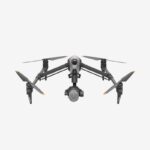
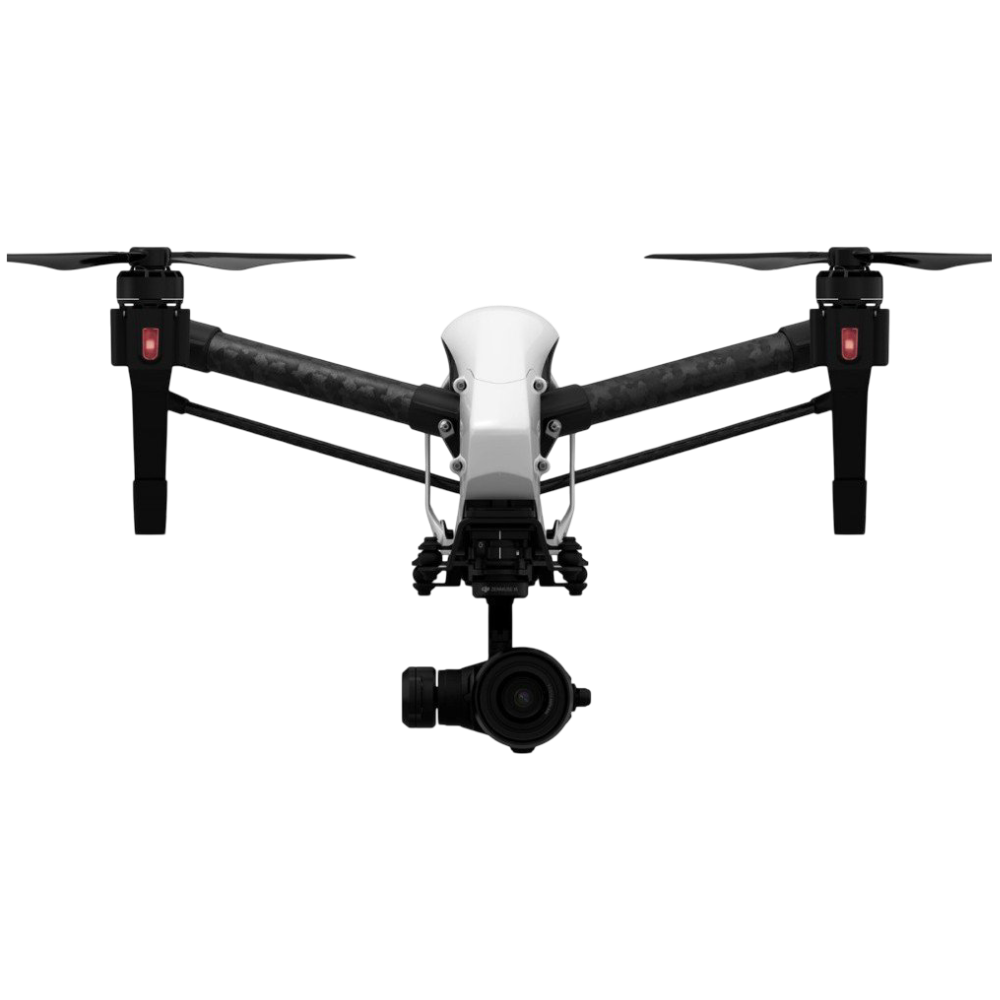


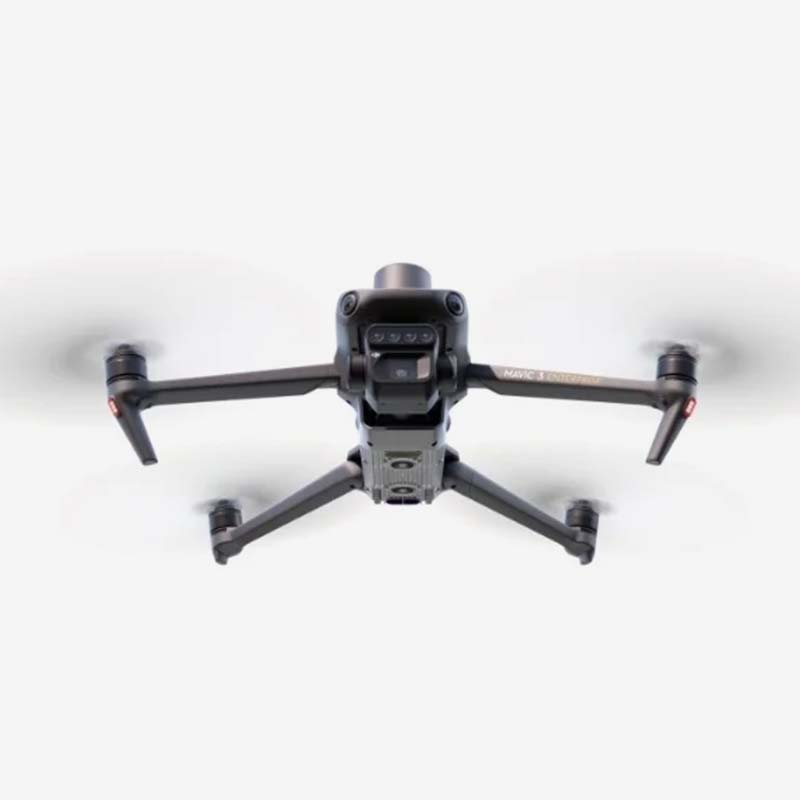
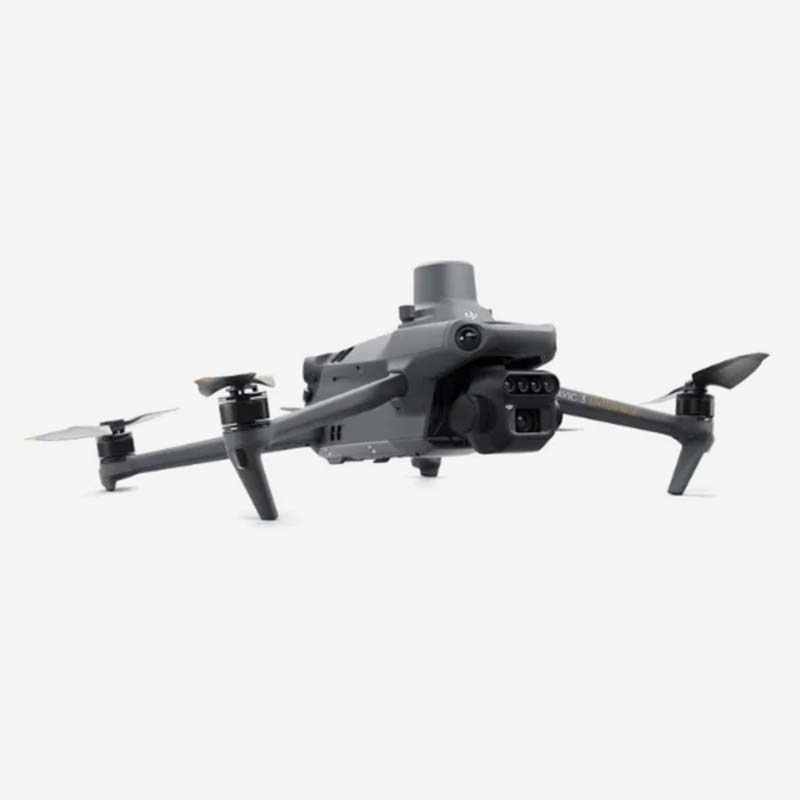
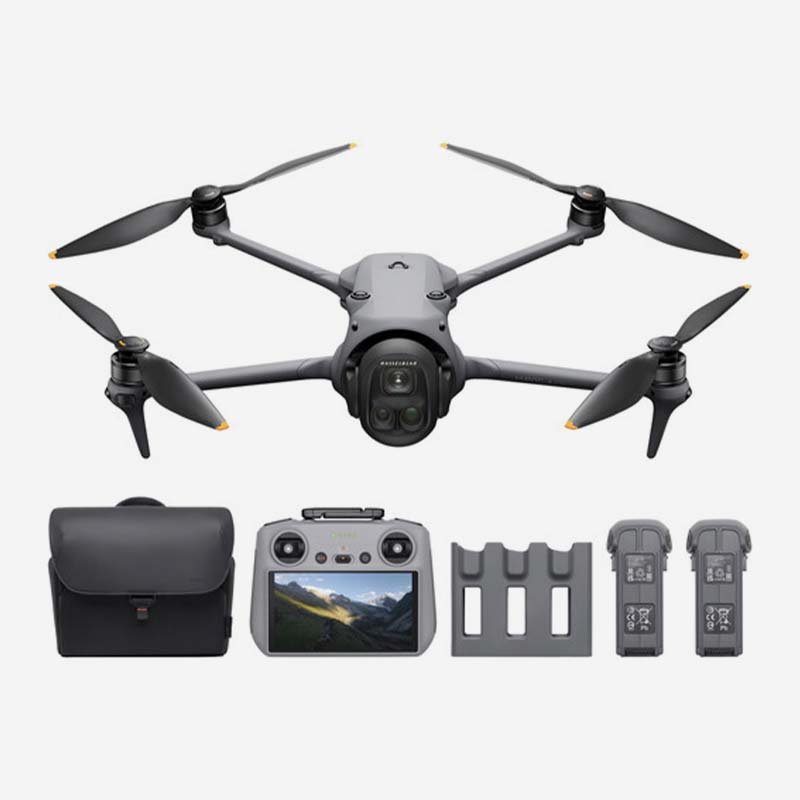
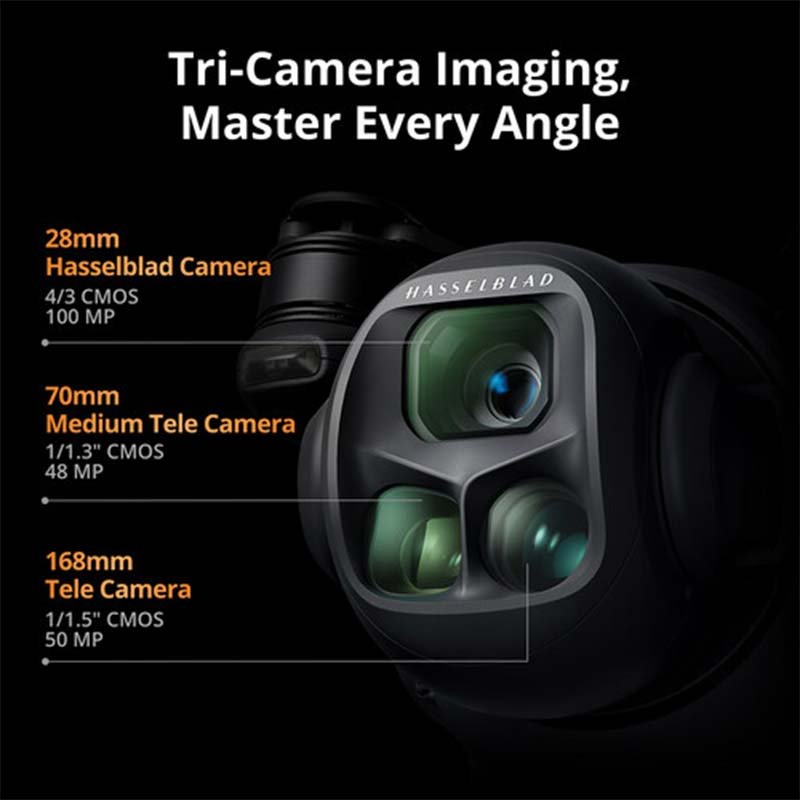

Reviews
There are no reviews yet.